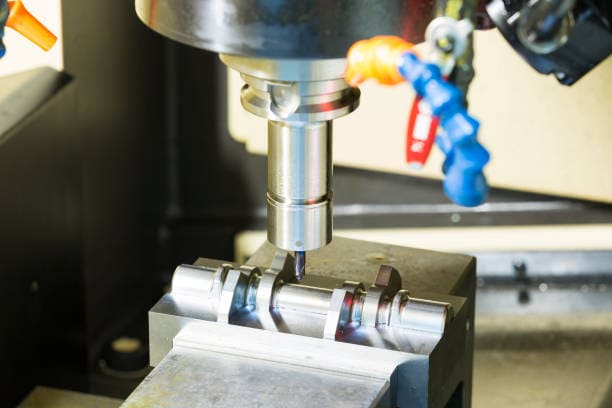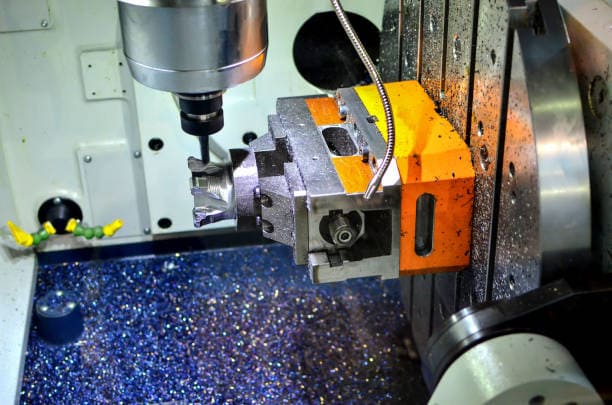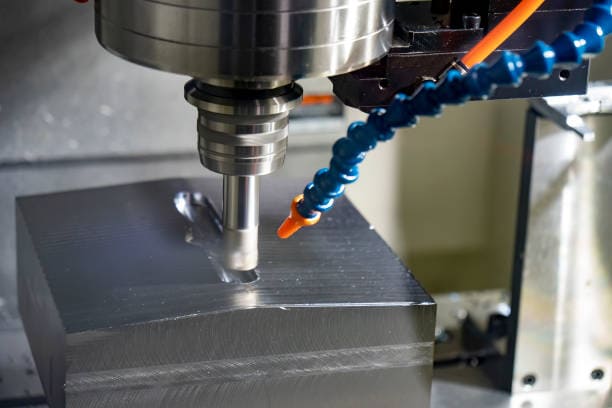Introduction
CNC (Computer Numerical Control) machines have revolutionized the manufacturing industry, making high-precision machining and complex part production more efficient and accessible. Central to the operation of these machines is the CNC spindle, a component that drives the cutting tool. However, as advanced as these machines are, they sometimes require additional features to enhance performance, safety, and precision. One such feature is the quasi-stop device, an essential component in many high-performance CNC setups.
This article will dive into why CNC spindles sometimes need to be equipped with quasi-stop devices and how this technology enhances machine performance. Whether you are an industry professional or just exploring the technical aspects of CNC spindles, this article is designed to give you valuable insights into a key innovation in the field.

The Role of Quasi-Stop Devices in CNC Spindles
What Is a Quasi-Stop Device?
A quasi-stop device is a mechanism that brings the spindle to a controlled near-stop without completely cutting off the rotation. This feature is particularly useful when the spindle needs to slow down rapidly and precisely without coming to a full stop, ensuring smoother transitions and minimizing wear on the machine components.
How Quasi-Stop Devices Enhance CNC Spindle Performance
By incorporating a quasi-stop device into a CNC spindle motor, manufacturers can improve the machine’s ability to handle delicate or complex parts. The device allows for rapid deceleration and repositioning without affecting the quality of the workpiece, leading to higher precision and reduced material waste. This is especially important in high-speed operations, where abrupt stopping can cause damage to both the material and the spindle.
Benefits of Equipping CNC Spindles with Quasi-Stop Devices
Improved Precision and Accuracy in Machining
One of the main benefits of using a quasi-stop device is the enhanced precision it offers. The device allows the spindle to slow down in a controlled manner, ensuring that each cut or adjustment is made accurately. This is crucial when working on high-precision parts where even the slightest error can lead to significant defects.
Enhanced Safety for Operators and Machinery
Safety is a major concern in any manufacturing setting. Quasi-stop devices reduce the risk of accidents by allowing the spindle to decelerate smoothly rather than stopping abruptly. This not only protects the machinery from wear and tear but also ensures a safer working environment for operators.
Case Studies: Success Stories of Implementing Quasi-Stop Devices
Feedback from Manufacturers
Several manufacturers have reported significant improvements in both performance and safety after implementing quasi-stop devices in their CNC router spindles. For instance, a leading aerospace manufacturer saw a 15% increase in precision while reducing spindle wear by 20% within the first year of installation. These improvements translated into cost savings and higher product quality, making the investment in quasi-stop technology worthwhile.
The Importance of Quasi-Stop Devices for CNC Spindles
Situations Necessitating the Use of Quasi-Stop Devices
In certain machining scenarios, the ability to decelerate the spindle without fully stopping is crucial. For example, when machining intricate parts that require frequent tool changes or adjustments, a quasi-stop device helps reduce cycle times and ensures the material is not damaged by sudden stops. This technology is also beneficial in industries that demand high throughput and minimal downtime.
Ensuring Safety and Reducing Wear in High-Speed Operations
High-speed machining often puts a significant strain on the spindle. A quasi-stop device helps mitigate this by providing a controlled deceleration, reducing the stress on the spindle components. Over time, this leads to less frequent maintenance and longer equipment life, which is a critical factor for any manufacturing operation looking to optimize its ROI.
Implementing Quasi-Stop Devices in CNC Spindles
Technical Considerations for Installation
Installing a quasi-stop device in a CNC router spindle motor involves a few technical considerations. First, it is essential to ensure that the device is compatible with the existing spindle configuration. Most modern CNC machines allow for easy retrofitting of quasi-stop devices, but older models may require more extensive modifications. Additionally, the device must be calibrated to match the spindle’s speed and torque settings to ensure optimal performance.
Maintenance and Troubleshooting Tips
Regular maintenance of the quasi-stop device is essential to keep it functioning properly. This includes checking for any signs of wear or damage, lubricating moving parts, and recalibrating the device periodically. In case of any malfunction, it is important to consult the manufacturer’s guidelines or seek professional assistance to avoid further damage to the spindle.
Industry Applications Where Quasi-Stop Devices Made a Difference
Precision Machining and Complex Parts Production
In industries like aerospace, automotive, and electronics, where precision is paramount, quasi-stop devices have proven invaluable. These devices enable manufacturers to achieve tighter tolerances and produce complex parts with minimal defects. For example, in the production of turbine blades, where even a slight imperfection can lead to performance issues, the use of a quasi-stop device ensures that each blade is machined to exact specifications.
Multi-Spindle CNC Machines and Increased Efficiency
Multi-spindle CNC machines benefit greatly from quasi-stop devices. In these setups, multiple spindles operate simultaneously, and the ability to control the deceleration of each spindle individually leads to more efficient production processes. This is particularly useful in high-volume production environments where downtime can significantly impact overall output.

Conclusion
Quasi-stop devices are an essential innovation in the world of CNC spindles, offering a range of benefits from improved precision to enhanced safety. Whether you’re working with high-speed machining or producing complex parts, incorporating a quasi-stop device into your CNC setup can help you achieve better results while reducing wear and tear on your machinery.
FAQ
What are the signs that a CNC spindle needs a quasi-stop device?
Some common signs include excessive spindle wear, frequent stopping during high-speed operations, and a need for improved precision in delicate machining tasks.
Why Are Quasi-Stop Devices Crucial for CNC Spindles?
They are crucial because they allow for controlled deceleration, reducing wear on the spindle and improving the accuracy of cuts and adjustments.
Can Any CNC Spindle Be Fitted With a Quasi-Stop Device?
Most modern CNC spindles can be retrofitted with a quasi-stop device, but it is important to ensure compatibility with the machine’s existing setup.
Key Takeaways:
- CNC spindles are crucial for machining precision.
- Quasi-stop devices enhance spindle performance by providing controlled deceleration.
- These devices improve precision, safety, and reduce wear on the spindle.
- Multi-spindle CNC machines benefit greatly from quasi-stop technology.
- Proper installation and maintenance are key to maximizing the benefits of quasi-stop devices.

- RicoCNC has a team of professionals who have been engaged in the design, production, sales, and maintenance of electro spindles for many years. Our company accepts the purchase of various types of CNC spindles.
water-cooled CNC spindle motors
Edge banding machine spindle motors.
- If you need any CNC spindle, please contact us.

